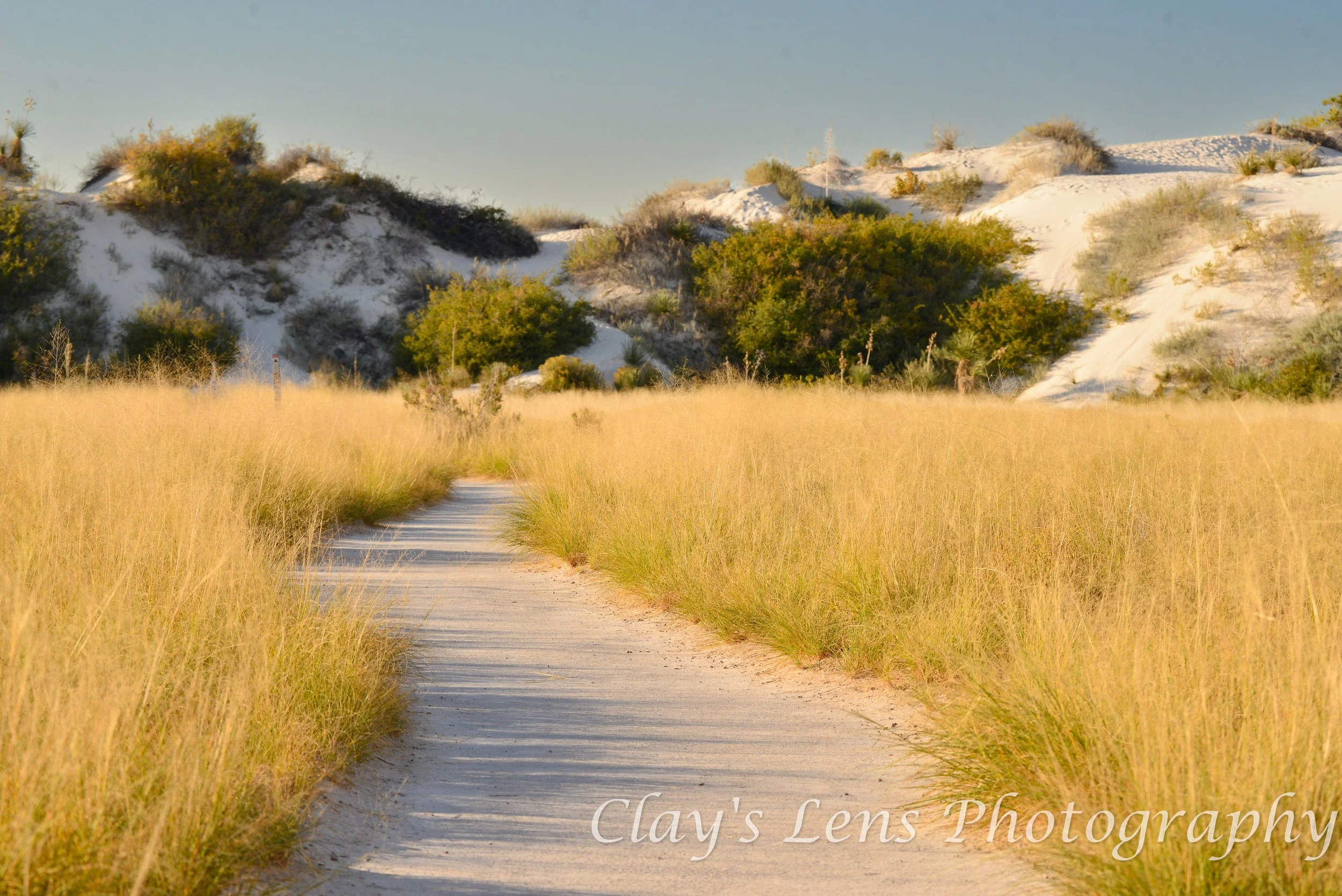White Sands Road-Trip Journal
Almost ten years ago Elizabeth showed me photos of a New Mexico park where bright white dunes roll to the horizon and the sand feels as soft and fine as powdered sugar. I was ready to grab the keys on the spot, but a quick search revealed a wild twist: White Sands National Park is almost completely surrounded by White Sands Missile Range.
“Oh no, wait, Eli, did you know the park is literally inside a missile range?” I blurted.
“Oh, that? I forgot to mention it,” she replied with a grin.
My jaw dropped. Minutes earlier she’d worried I might be dehydrated; now she was trying to dodge missiles? lol. That detail postponed our spontaneous getaway, yet curiosity eventually won. We’ve visited twice, and our most recent trip was the best yet, here is how it unfolded.
Why White Sands Is Iconic
White Sands protects roughly 275 square miles of shimmering gypsum dunes, the largest gypsum dune field on Earth. Gypsum does not hold heat, so the surface stays cool even in full sun. Wandering barefoot becomes part of the experience, and every breeze smooths the ripples into a fresh canvas for footprints and sled tracks.
Where You’ll Find It
The park sits in the Tularosa Basin just northeast of Alamogordo on US-70. It is about an hour from Las Cruces (52 miles) and ninety minutes from El Paso (96 miles), making it an easy day trip or weekend detour for travelers across southern New Mexico and West Texas.
Facilities You Can Count On
Visitor center and small museum with exhibits, helpful rangers, and a gift shop that rents plastic sleds.
Multiple restrooms spaced along the scenic drive and at trailheads.
Shaded picnic sites, back-country campsites, and five signed hiking trails.
Driving the Dunes
Dunes Drive is a sixteen-mile out-and-back loop (eight miles out, eight miles back). After a few asphalt miles the pavement gives way to packed, plowed gypsum, white as snow, firm under the tires, and almost silent to drive on. The road ends at a broad turnaround ringed by picnic shelters.
| Trail | Distance | Highlights |
|---|---|---|
| Alkali Flat | 5 mile loop | Tallest dunes, 360 degree views; spectacular at sunrise or sunset |
| Dune Life Nature | 1 mile loop | Family friendly with interpretive signs and wildlife tracks |
| Playa, Interdune, Backcountry, Boardwalk | 0.5 – 2 miles | Short strolls that reveal different dune habitats |
Our Sunrise Circuit
We rolled through the gate before sunrise to catch pastel light melting into brilliant white. At the Alkali Flat trailhead two silhouettes were already cresting the tallest ridges. Eli and I kicked off our shoes for part of the five-mile loop and watched sunrise paint lavender shadows across the dunes. After an hour of portfolio shots we regrouped at a picnic table for water and snacks, soaking up the stillness.
Next came the Dune Life Nature Trail. This one-mile circuit skirts the dunefield edge and highlights how plants adapt to shifting sand. We marveled at a cottonwood trunk almost buried beneath a living dune and traced lizard tracks zig-zagging between yuccas.
Final Takeaway
Whether you are an El Paso local craving a quick escape, a Las Cruces family chasing weekend magic, or a long-haul traveler piecing together a Southwest loop, White Sands is worth every mile. Cool gypsum underfoot, sunrise pastels overhead, and dunes that reset themselves each night, few places feel this otherworldly yet this welcoming. Ready for your own white-dune adventure? Plan your route, then explore my full White Sands photo gallery and other road-trip stories on my website, where you can purchase high-resolution images for your home or office.
For official hours, fees, and advisories, visit the National Park Service White Sands page.










